The place gets its name from the color of the rocks in the region. They are similar the color of the dry fruit – Badami and hence the name.
Badami has a number of temples built between the 5th and 8th century, the most famous among them are the cave temples. Due to time constraints and the fatigue of having traveled to Hampi, we decided only to visit these cave temples. There are 4 cave temples (plus one natural cave).
Chalukyas were predominantly followers of Lord Vishnu, however the latter kings were also followers of Lord Shiva. A few also embraced Jainism. This is evident from the 4 cave temples. The first one is dedicated to Lord Shiva, 2nd and 3rd dedicated to Lord Vishnu and the 4th one to Jainism. In the 5th (natural cave) there is a sculpture, though the exact identity of this carving is not know, it is though to resemble Lord Buddha.
The temples have been carved into the hills, except for the deities nothing in the temples is foreign. Everything has been carved into the finely grained horizontally stratified sandstone hills of Badami. Each of these temples are characterized by a pillared “mukha mutapa” (verandha), then a “maha mantapa” and then a small cell – the “garbha gudi” which houses the God.
The 3rd cave (from below) dedicated to Lord Vishnu is the oldest among the 4 caves. It is also the most grandest and the biggest of all the 4 caves. The main idol is missing (same is the case with the other Vishnu cave temple) – it is believed to have been destroyed in the 16th century during the muslim invasion. The sculptures and carvings here depict the various incarnations of Lord Vishnu including Bali Chakravarthi, Vijayanarasimha, Ranganatha among others.
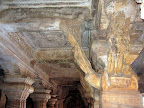
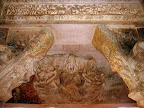
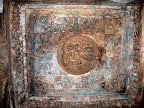
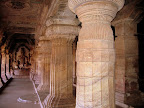
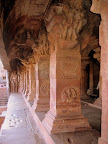

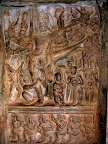
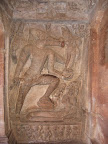
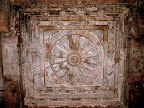



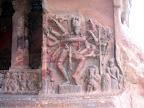
The 4th cave is dedicated to Jainism and consists of various Jain thirthankaras. Though not as big or as elaborate as the other 3 Hindu temples, the sculptures are very unique.



Depending on your interests it could take 2-3 hours to view these cave temples. There are other temples in the vicinity, which we skipped. To cover all of them it could take a couple of hours more. The film Guru was also shot in this area.
Close to Badami there is Banashankari Temple and Mahakuta temples. Unless you are deeply religious you may want to skip Banashankari Temple, but the Mahakuta temple complex is worth a visit. Both these places are with in 20km from Badami. Mahakuta was also one of the capitals of the Chalukyas. There are lot of Shiva temples in this complex.
More pictures below:
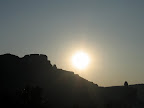

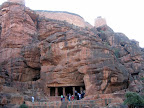

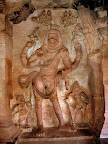
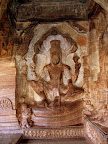
2 comments:
Rithu,
Your pictures are really good along with the comments. A small piece of advice: have some people in the pictures as it makes the surroundings more alive. Only thing is that the person should not usurp the entire focus of the picture.
Thanks for that feedback Rajiv :)
Post a Comment